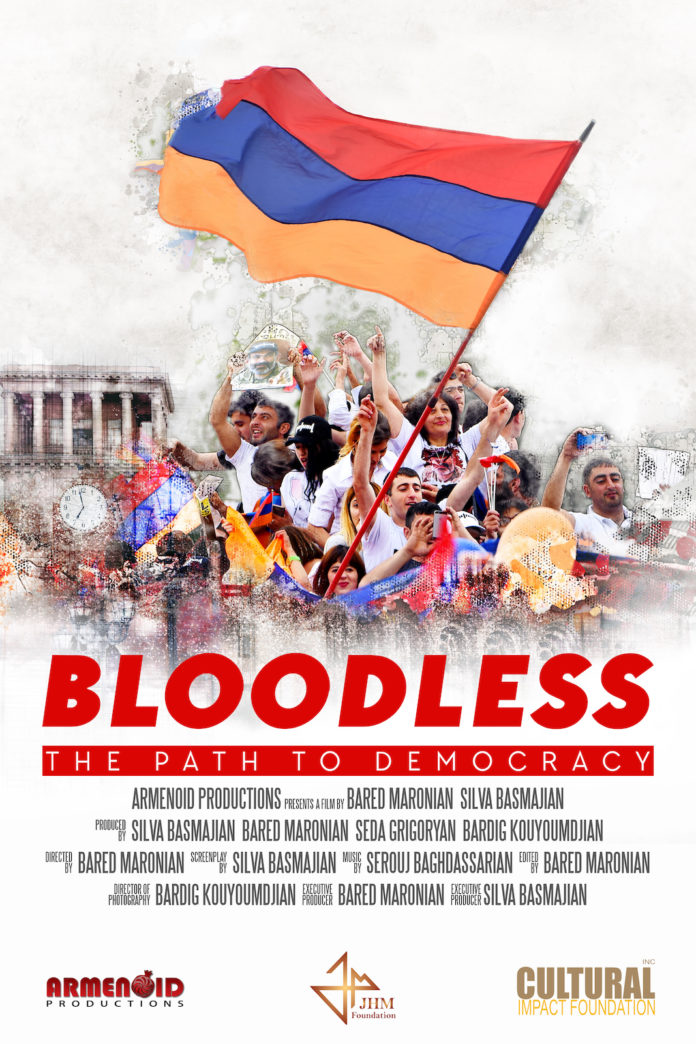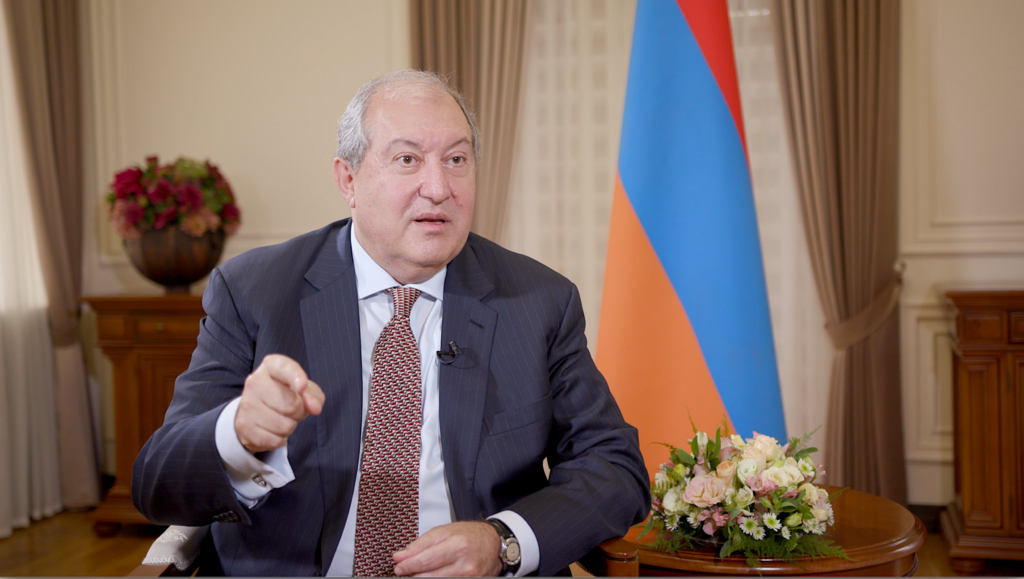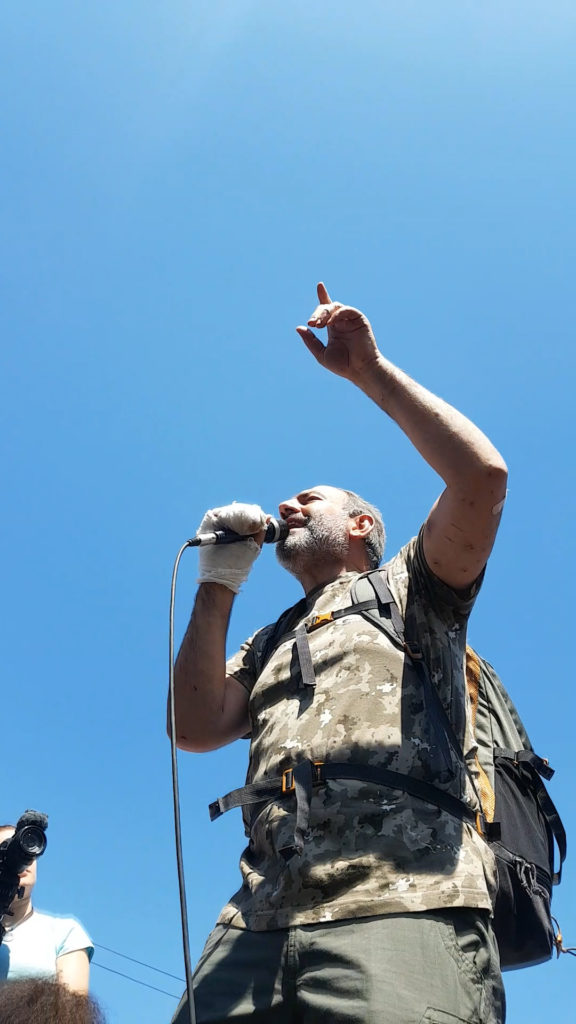Special to the Mirror-Spectator
Bared Maronian’s “Bloodless” relates the gripping story of the 2018 Velvet Revolution, which saw the overthrow of Serzh Sargsyan’s oligarchic regime in Yerevan. It is difficult to overstate the importance of the Velvet Revolution, which brought to power the tech-savvy and democratic leader Nikol Pashinyan in unprecedented circumstances. Using social media to mobilize a citizenry at first made up almost entirely of the country’s youth, Pashinyan was able to force the existing prime minister to resign and after two votes in parliament was elected de facto prime minister on May 8.
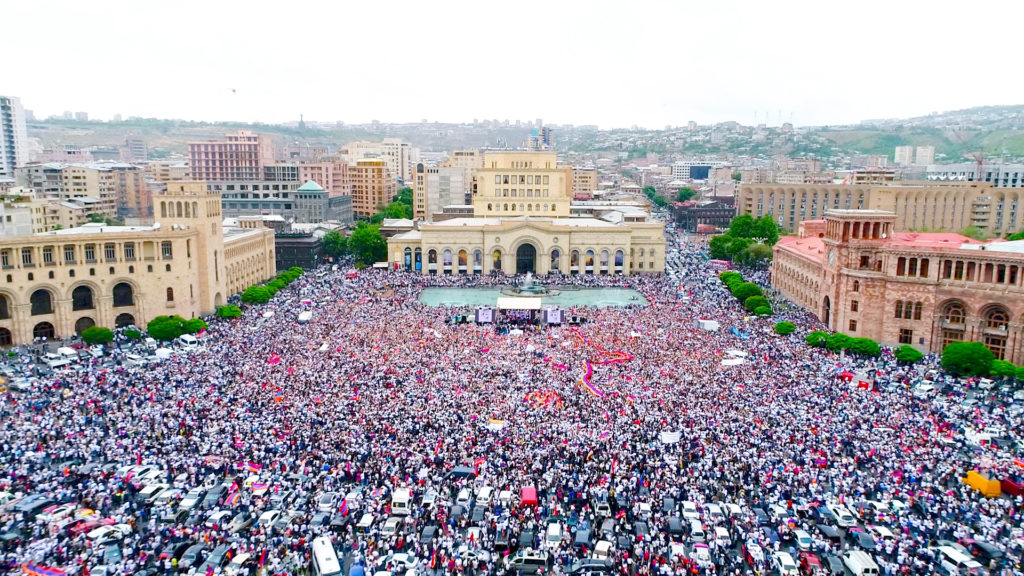
The Lebanese-born Maronian is an experienced filmmaker and four-time Regional Emmy Award winner. Previous works include “Orphans of the Genocide” (2013) and “Women of 1915” (2016), which examined the plight of Armenian women during and after the Armenian Genocide.
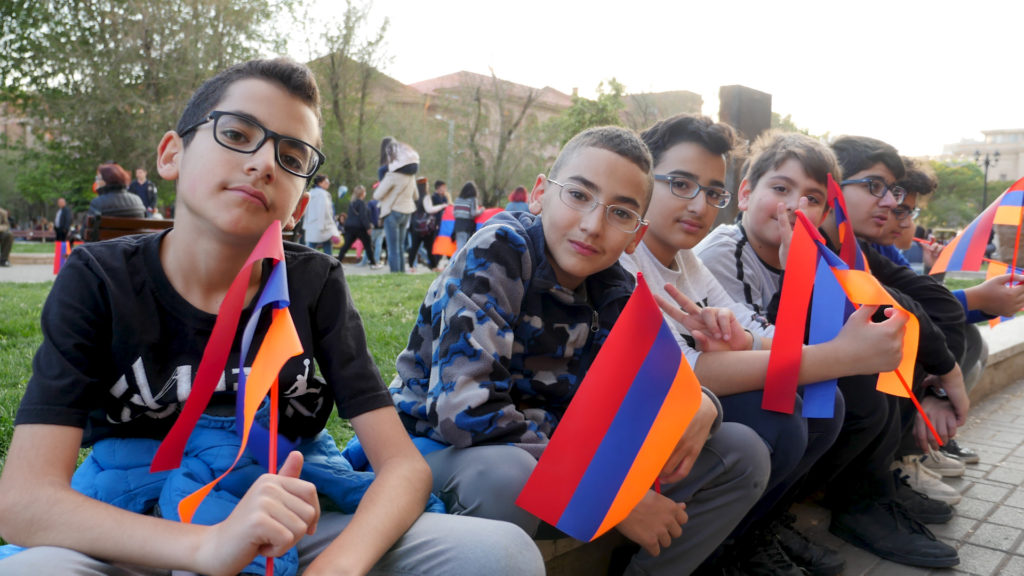
Maronian’s newest effort is commendable given the fact that he didn’t originally plan to make a documentary about Pashinyan and the Velvet Revolution. Rather, his project took form organically during a visit to Armenia that happened to coincide with the events that he so ably describes in “Bloodless”: “One beautiful spring morning, while resting in my hotel room in Yerevan, Armenia, I heard a commotion coming from outside. I opened the window and saw thousands of young men and women chanting while marching. I immediately grabbed my camera, ran down to the street and followed the march capturing the sights and sounds of what I was experiencing.” Over the coming month, his camera recorded what is undoubtedly one of the most successful peaceful revolutions in recent history, along with Czechoslovakia’s Gentle Revolution of 1989 and the 2005 Cedar Revolution in Lebanon.
Maronian’s film intercuts found footage and his own shots of the revolution with interviews of government officials, United Nations Resident Coordinator Shombi Sharp as well as local media personalities such as EVN report’s Maria Titizian. At times his reliance on their opinions to push forth the narration makes his film feel more like a “Frontline” television report than a documentary film, but it works nevertheless.

To my mind, Maronian’s great strength in the documentary is to emphasize and give voice to people who have found themselves silenced in traditional Armenian patriarchy, most noticeably women. From diasporans such as Arsinée Khanjian who flew to Armenia to lend her support to the revolution, to the nameless women who shook pots and pans outside their windows in support, to the young girls who risked their lives by lying down in front of buses and cars in order to send a message to then Prime Minister Sargsyan, Maronian shows in no uncertain terms the link between the peaceful nature of the revolution and the relatively large number of women who participated in the April events.



